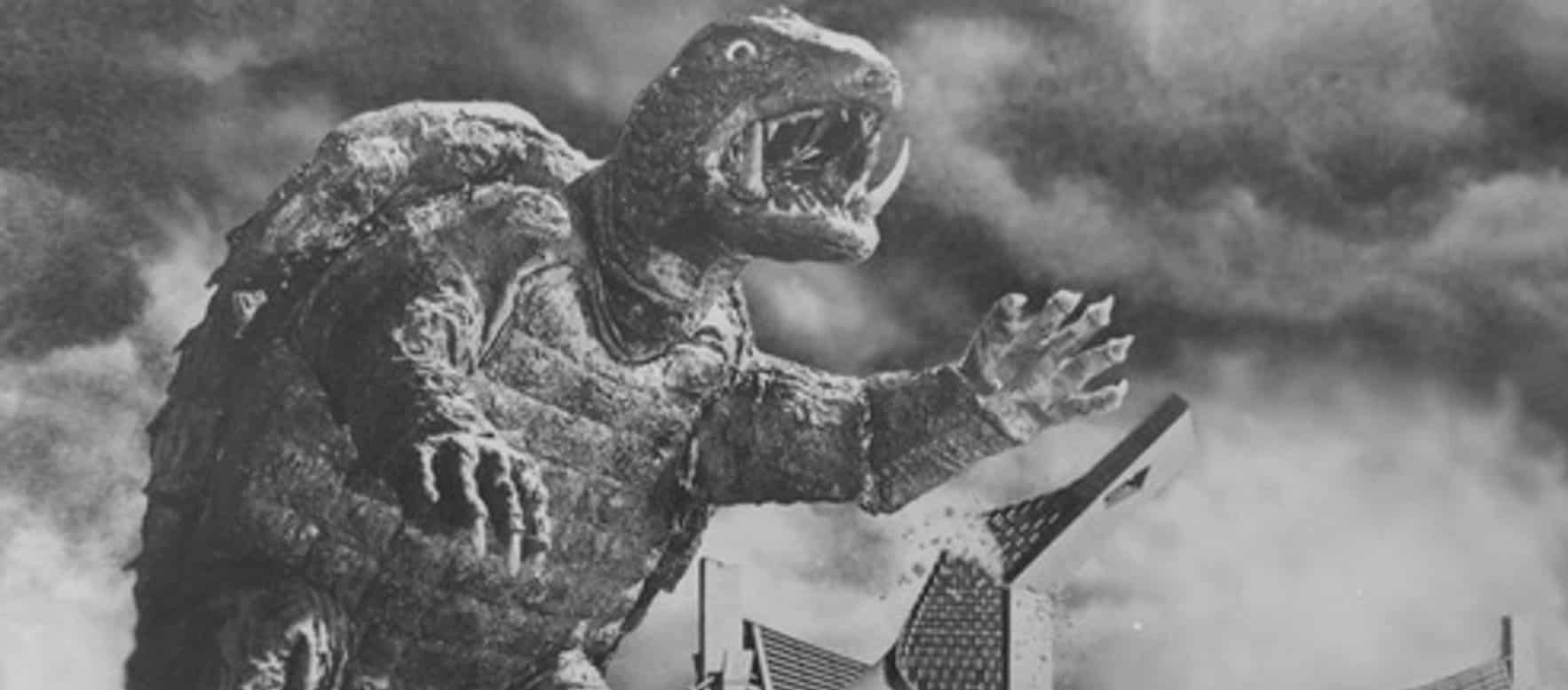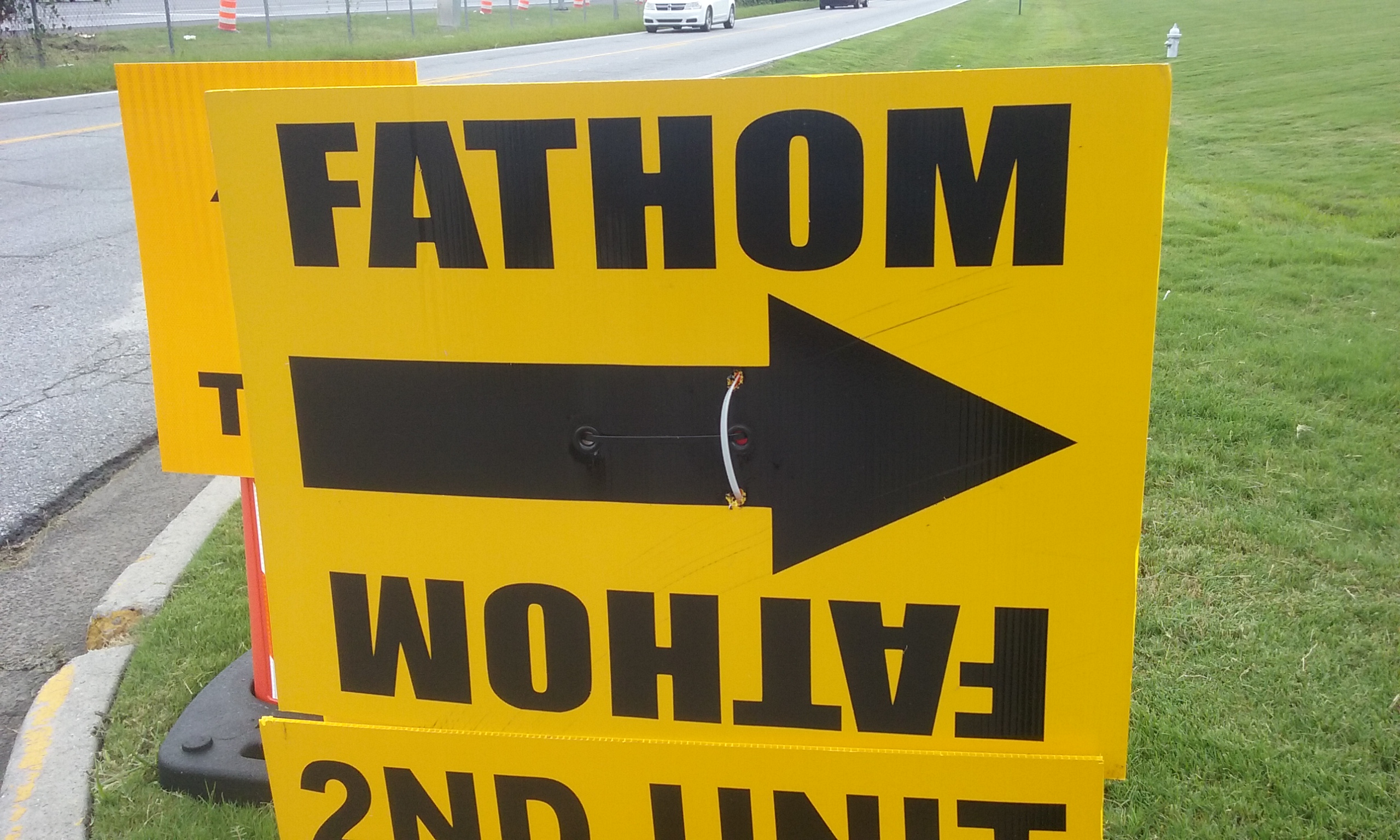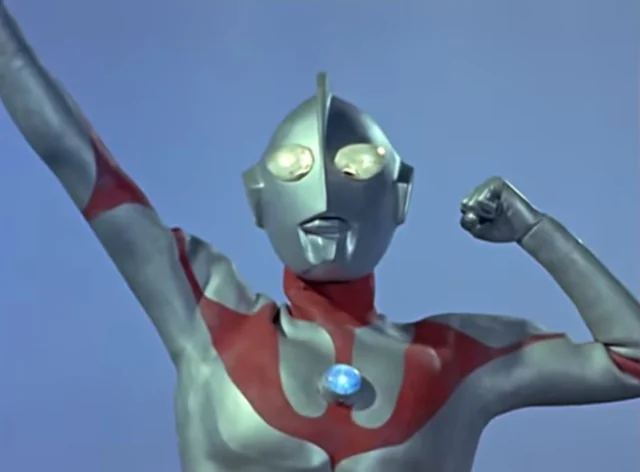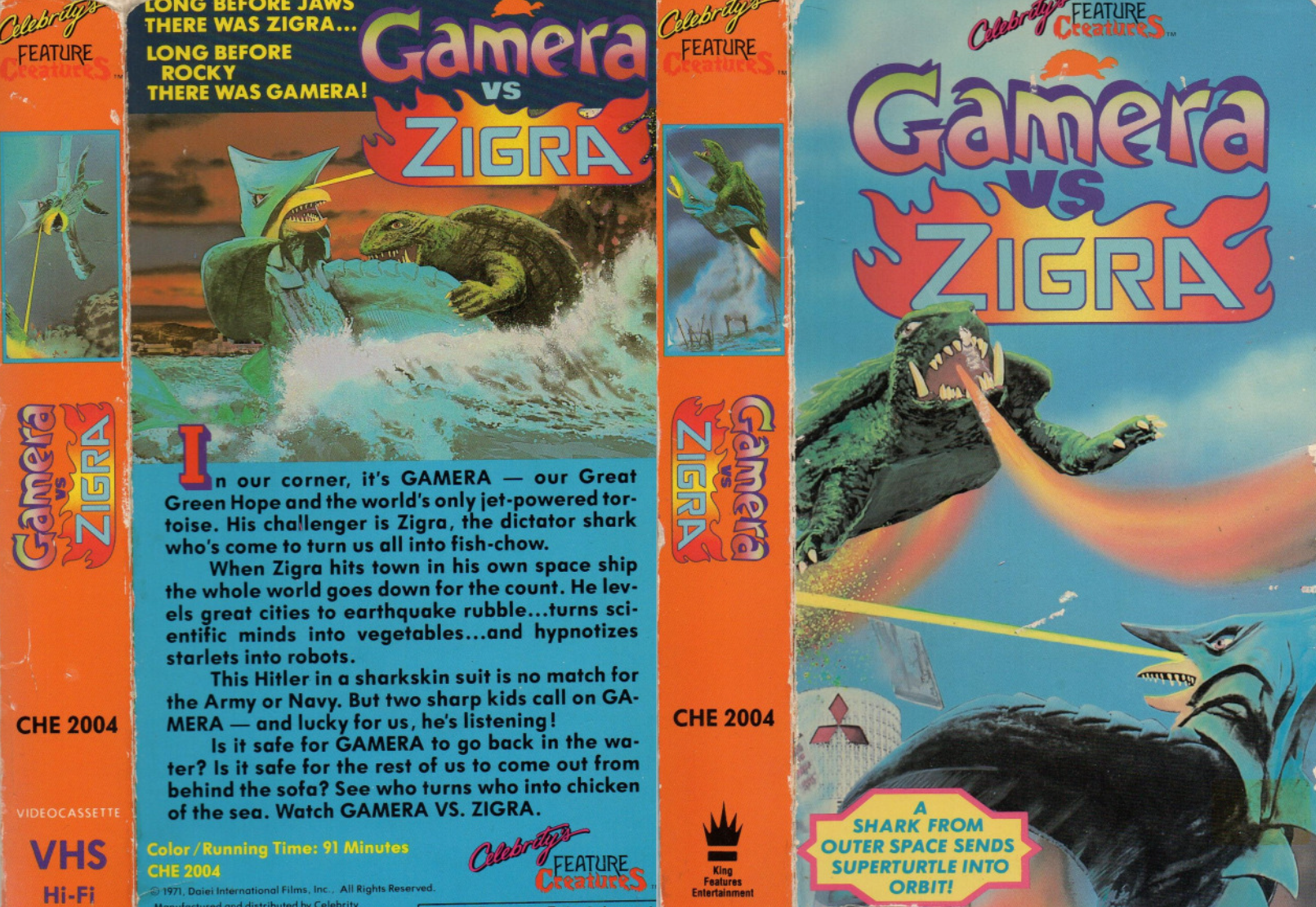In 1954, Ishiro Honda, et al, released what would become the defining film of Japanese Science Fiction for decades to come. Gojira, later angelized to “Godzilla”, was a politically charged special effects extravaganza. Naturally, as with all things even marginally successful, a sleugh of sequels, spinoffs, crossovers, and of course, rip-offs would ensue. One of those rip-offs would hit Japanese theatres in November 1965; “Gamera“ was directed by Noriaki Yuasa and was a not-so-subtle Godzilla wannabe. It arrived around the same time as the distinguished competition hit its sixth cinematic entry. At the same time, Eiji Tsuburaya (a special effects Maestro who had previously been one of the creators of the original Godzilla) took the thrills and fun of the Kaiju genre to the small screen with the mystery-focused Ultra Q series, that would soon spill out into the pop-culture phenomenon as the Ultraman franchise.
It would seem then, that Gamera would be destined to obscurity, caught between the horror and tragedy of the genre’s genesis, and the child-friendly absurdity of Kaiju on TV; However, I’d argue that to make such a suggestion does a significant disservice to the Gamera movie series. Having recently done a complete watch-through of the original film series to celebrate the big Turtle’s 60th birthday later this year, I found myself realizing just how much the franchise can be seen as a microcosm of the changing culture and approach to monsters in Japan at the time. As I would assert, the Gamera films beginning with the eponymous original, leading up to the 1980 glorified clip show “Super Monster”, coalesce into a complete picture of the genre during that time; and perhaps, even had a hand in shaping the direction of the genre.
When “King Kong vs Godzilla” hit theatres back in 1962, the previously niche Kaiju subgenre of Sci-Fi became a sensation in Japan – a sensation that could be shipped abroad to American audiences! As such, it became just about every studio’s best interest to pump out as many of these movies as possible. This leads us to Daei, and in extension, director Noriaki Yuasa. Like all studios at the time, Daei sought to create its own giant icon. Two projects would arise from Daei in this time, one would be a trilogy, a visually ambitious and dramatic interoperation of ancient Japan’s fears and triumphs – Daimajin, and the other was about a big turtle. Gamera was a bizarre creature, even for the time. Perhaps that’s the thing that drew people to him at the time, a big turtle with tusks who drinks fire and can fly like a UFO by retracting his limbs and using his shell to expel rocket jets! Despite the film being shot in the already outdated black & white, and having a budget and story that left a lot to be desired, Gamera stood out from the crowd.
The 1965 film that began it all feels like it lies perfectly on the precipice of change in Kaiju media at the time. Throughout the 50s into the early 60s, the genre was seen as being dramatic and serious. This can be glanced by the seriousness of Godzilla and its immediate sequel, as well as other Toho-produced movies a la, Rodan (1956), or Varan (1958). We can see the impact of this on the first Gamera movie, it does take itself far straighter than the sequels that would follow. Even in the characterisation of the monster himself; long-time fans of the franchise may be accustomed to the big Turtle being the friend to all children who shares a close bond to a kid protagonist. However, that was not the case here: Gamera is treated as every bit a threat as Godzilla.
It may come as a surprise then, that one of the protagonists of the movie, is a child. Toshio, played by Yoshiro Uchida would become the first of what fans have dubbed “The Kenny” – an annoying child inexplicably attached to the titular monster and vice versa. Throughout the movie, as Gamera stomps city and person beneath his foot, Toshio follows the monster around constantly attempting to communicate with it, believing it to be his pet turtle who escaped (????). Somehow, for whatever reason, Gamera returns the favour, saving the boy from harm near the end of the film.
This would be a trope that would go on to become an essential element of the films of the era. In the aforementioned “Ultra Q” Series, its sixth ever episode would feature a young child befriending a kaiju. Not just any Kaiju mind you, a flying turtle conspicuously dubbed “Gameron”. The episode itself is a quintessential Ultra Q episode; a fever dream concocted with fantasy and sci-fi intended the thrill all audiences with sheer absurdity. But it does begin the trend that would only become more apparent: This cheap and goofy Godzilla knock-off, who, on the surface appears to be the third wheel to Godzilla and Ultraman, may in fact be the hidden guiding force behind the Kaiju subgenre.
By the time Gamera got a sequel, with 1966’s “Gamera vs Barugon”, the first “Ultraman” series had begun, a child-friendly adventure series that focused on a team of science-soldiers and a giant superhero as they defend the earth from alien invaders and towering monsters. With it, it began the decline of Kaiju on the big-screen. A few years earlier, Japanese families had flocked to stores to purchase a television set to watch the Olympics. Now, Eiji Tsuburaya brought the titanic spectacle previously only seen on the big-screen, to the small screen. It disincentivised adults from going to the cinema, after all, why waste money on a film when you can get all the thrills you want for no cost at all, and all within a neat 24-minute episode. With the decline of interest in cinematic Kaiju, the genre began to crumble.
“Gamera vs Barugon” is notable for being the only film in the series not directed by Noriaki Yuasa, and it is more than evident. It’s a darker and more serious film, though still complete with the series’ signature bizarre moments (the titular foe spits a killer rainbow from his back, for whatever reason). However, that would not be the case with the third film – 1967’s “Gamera vs Gyaos”.
Despite having an uncanny amount of brightly-coloured monster blood, “GvG” is a kid’s film through and through. It yet again centres a child main character and sees the beginning of the more modern characterisation of Gamera himself who now goes out of his way to protect children. It is notable that the Godzilla film that released that year was “Son of Godzilla”, a somewhat divisive film that began Godzilla’s heel turn from monster to superhero.
If the Ultra series took the child-friendly adventures of its content from the first Gamera film, and Godzilla sought to imitate the success of Ultraman by making itself a more child-friendly franchise, then we can attribute such a change to Gamera by Proxy. However, it’s still worth noting that Gamera was undoubtedly the underdog between the three; Godzilla now had eight films, and the Ultra series had just begun airing “Ultraseven”, a critically acclaimed science fiction series that has gone on to become a series highpoint.
We can see the moment where the Gamera series became the poster boy for kid-friendly and cheap monster content in the release of 1968’s “Gamera vs Viras”. Vs’ Viras is an incredibly cheap movie, taking place mostly in a few small locations, and featuring a considerably fewer Kaiju fights than previously. Furthermore, it begins a new trend for the Gamera series, in that it features a duo of young boys (one Japanese and one American) as its protagonists. The film begins with the now infamous “Gamera March” a cutesy tune sung by a literal boy scout choir. In the film, it is the friendship between Gamera and our two prepubescent leads that save the day from the titular alien invaders.
At the time, the Godzilla series was considered practically dead in the water, with that year’s “Destroy All Monsters” intended to end the series on a high, only for it to make so much money that Toho producer Tomoyuki Tanaka couldn’t resist dragging it out a little while longer. “Gamera vs Viras” was followed only a year later by “Gamera vs Guiron”, a film that followed very much so the same formula, replete with two boys of two nationalities leading its story, aliens (this time the boys go to them rather than the aliens being invaders of some kind), and a happy little jingle welcoming Gamera as he arrives to save the day.
It also marked the beginning of a further alteration in Gamera’s character. Where previously he had been an altruistic monster who sought to protect the innocent youth of Japan, now he was an all-out superhero, no doubt an attempt to capitalise on the growing interest in the genre at the time. That same year, the Godzilla series would welcome what is commonly regarded as the worst of the entire franchise – “All-Monsters Attack”. A film so akin to Gamera you’d be right to confuse the two had you had little experience with the series. Following the friendship between a boy and a monster (here Godzilla’s son), having a strong focus on a kid audience and cutting the budget as much as feasibly possible as Japan entered recession.
The Gamera series was of course, no stranger to cutting the budget, after all, the previous movie took place almost entirely on a single beach location! There was a clear and evident conversation going on between the two titans of Kaiju film at the time. One wherein Gamera would add new cost-cutting measures and experiment with adopting a more adolescent tone, and the Godzilla series would quickly swoop in with something eerily similar.
The next two films that would follow, 1970’s “Gamera vs Jiger” and 1971’s “Gamera vs Zigra” would very much so follow the formula established by both ‘vs Viras, and vs. Guiron. They are arguably the worst in the series, as they began to feature increasing amounts of stock footage and plots that became nigh-indistinguishable from earlier entries. The Ultraman series, which had seemingly ended after Eiji Tsuburaya’s death, was reborn with the fittingly named “Return of Ultraman” series, and studio Toei would capitalise on its success with a superhero show of their own, “Kamen Rider”. The films were cheap, the audience shrinking, and the studio had become disinterested in continuing the series. The Godzilla movies would trek on for a few more years before succumbing to the same fate in 1975, where it would enter its first genuine hiatus.
There was later an attempt to revive the Gamera series, once more from Yuasa, who created the baffling “Gamera: Super-Monster” in 1980, a glorified compilation film that was built almost entirely out of stock footage from earlier films, as well as capitalizing on the iconography of Superman and Star Wars. It even included scenes where it featured stock-footage of animated movies against the very live-action Gamera animatronic. It’s no wonder then, that this put the big turtle on ice for the next 15 years, until it would be reimagined with a far harder edge with the now iconic Gamera Trilogy.
From visionary director Shusuke Kaneko, the Gamera Trilogy (1995-1999) brought the iconic kaiju back in a visually breathtaking reinvention that far surpassed the competition of its time. It matched the more modern sensibilities of the 90s, brining in far greater themes and mythology, whilst rebooting the franchise entirely. It’s hard to overstate just how important these three films are in the direction of the Kaiju genre.
It’s little surprise then, that, as audiences dwindled for the Godzilla franchise, Kaneko was brought in the spark some novelty with 2001’s “Godzilla, Mothra, and King Ghidorah: Giant Monsters All Out Attack”; a darkly satirical and occult reinterpretation of the Godzilla mythos, and perhaps the most solid transfer of ideas and direction from one franchise to another. It’s no secret that the 90s Gamera trilogy were a sensation, with even Roger Ebert giving the first movie a thumbs up upon its American release.
Gamera would only get one more live-action movie, 2006’s “Gamera The Brave”, arriving two years after Godzilla entered his second hiatus. But I think that its important to look back upon the direction of this bizarre little film series because I think its quite clear just how big of an impact it had on the genre. Would the Godzilla series ever have seen its eponymous monster make the leap from terror to hero, or have a son, or feature a distinctly childlike vision of its franchise, without the impact of Gamera? For a series so often denounced as a Godzilla knockoff that never made an impact on the genre until its 90s reboot, it seems to have laid the foundations for the entire Kaiju medium as it entered its twilight years of the late 60s and 70s.
Though I mentioned earlier that the first film felt like it existed in transitory state between the seriousness of the earlier kaiju movies of the 50s, and the goofier adventures of kids’ Television in the 60s and 70s, I think that it largely created that division itself. By retooling a horror-focused genre to appeal to children, it inadvertently forever altered the path that all other Kaiju-media would follow for years to come. I think for an underdog, that’s quite impressive.
As we approach the 60th birthday of the strangest Kaiju icon, maybe we should all go back and revisit those goofy 60s flicks, or maybe even watch them for the first time, and appreciate them a little bit more as an important piece of the mosaic of the genre and the importance it had in shaping the landscape of giant monsters forever!





